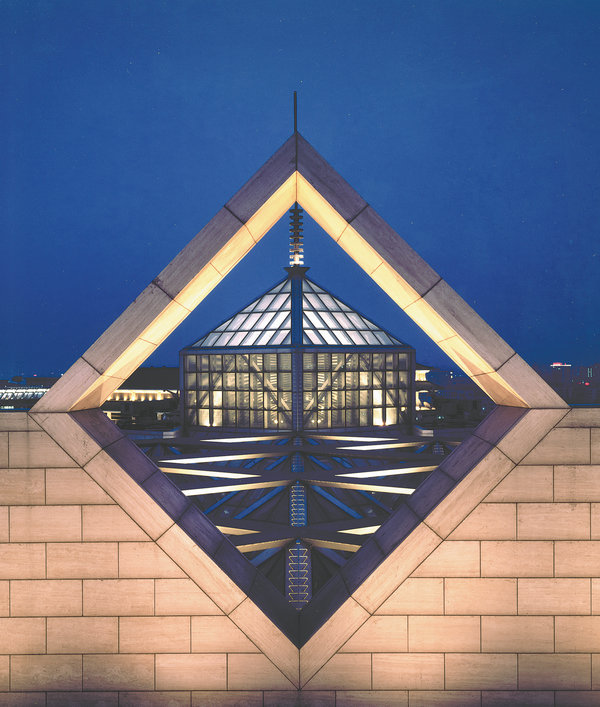

He recalls when he did the Bank of China building in Beijing, there was a room where companies came to get their payrolls. "They paid everybody in cash, so this room was full of money, and it had to be very secure. But nobody does that anymore, either," he says.
He feels that architects always have to adapt, learn and understand why things have changed. "If you think every building is similar, it's not. Every one is a new one."
He has also designed two large hospitals in the US. For these medical projects, he notes, it's important to listen really carefully to the clients.
He proposed a less usual idea, that the corridors in the hospital should be on the outside of the building with the windows, instead of in the middle with rooms on each side.
"I showed them that the efficiency is even better, and I convinced the hospital to do something that other architects said I shouldn't," he says. "The most important reason I wanted to have the windows is because I wanted to bring the light in."
Chien Chung Pei believes that without light, there is no architecture.

He has worked on the design of the Suzhou Museum in Suzhou and the Six Dynasties Museum in Nanjing, both in Jiangsu province. When it comes to building museums, he says that besides light, it's important the museum has the right temperature and humidity, especially for art, as some of the exhibits are among the most fragile, such as those made of paper, wood and textiles.
Since first visiting China in 1976, Chien Chung Pei has returned dozens of times, and his familial hometown, Suzhou, is one destination he never misses. Each time he visits, he will go to the family's old house and see what's happening there.
He thinks that one signature of Suzhou architecture is its windows. "It's a picture frame, not just a rectangle," he says. "Everything that we do in China has a feeling that the building belongs in China. It isn't necessarily like traditional Chinese architecture. But it's a building that feels like it should be in China."